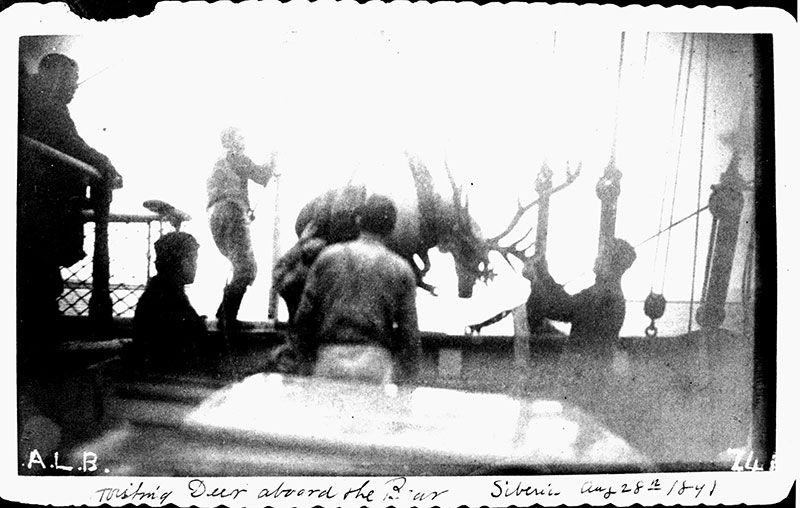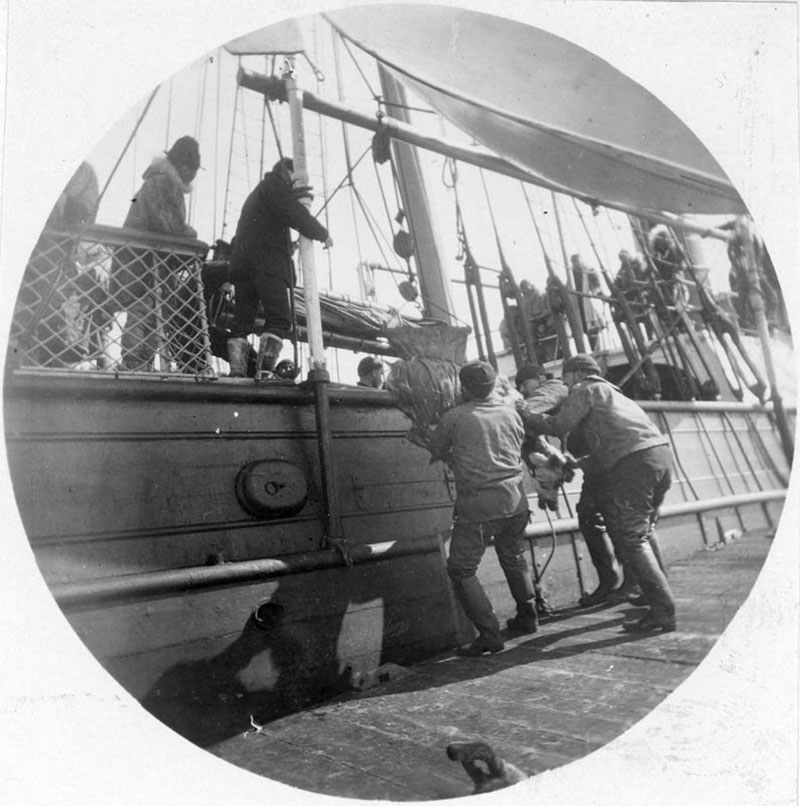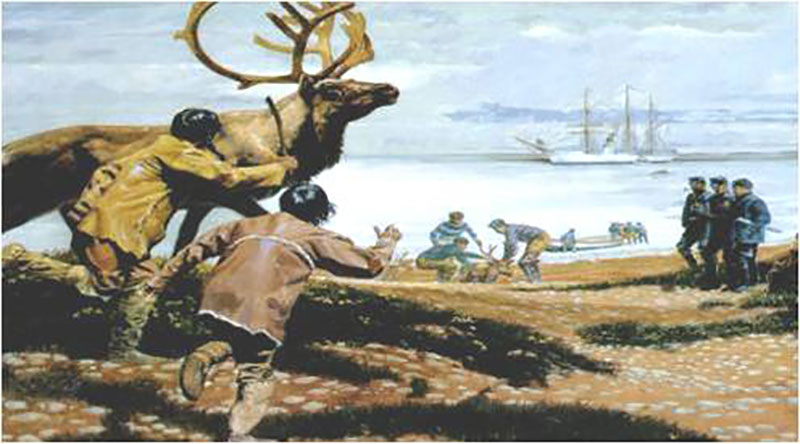
By William H. Thiesen, Historian, Coast Guard Atlantic Area

Faded image of reindeer hauled on board Cutter Bear in August of 1891. Image courtesy of the U.S. Coast Guard. Download larger version (jpg, 1.3 MB).
...the introduction of deer seems to be the solution of three vital questions of existence in this country—food, clothing and transportation.
–Captain Michael Healy, Cutter Bear, 1890
As a Bering Sea Patrol cutter, Bear saved lives at sea but it also preserved the lives of those surviving in Alaska’s frozen frontier.
The native people of Alaska relied heavily on whaling and fishing when the territory came under U.S. control in 1867. However, after foreign whaling, fishing, and sealing vessels entered Alaskan waters, fish and game numbers diminished dramatically, causing large-scale malnutrition and starvation in native towns and settlements. To solve the problem, Captain Healy tried to convince authorities that Siberian reindeer should be introduced to Alaska.

Loading reindeer from the docks on board the Bear in 1896. Image courtesy of the Presbyterian Historical Society. Download larger version (jpg, 230 KB).
In 1890, Dr. Sheldon Jackson, then Agent of Education in Alaska, sailed on Bear and together with Healy, they devised a plan to transport reindeer to the territory. The next year, Healy shipped 16 live deer and hundreds of bags of native moss for feed from Siberia to the Aleutian Islands to test the animals’ ability to travel by sea. Healy’s views won over government officials. In 1892, he brought over the first official shipment of reindeer to the Seward Peninsula and set up a reindeer-receiving station at Port Clarence.
During the 1890s, cutters transported thousands of reindeer to Alaska. By 1930, Alaska’s domesticated deer herds totaled 600,000 head, with 13,000 native Alaskans relying on these deer for life’s essentials.

Painting showing the 1892 transfer of Siberian reindeer by Cutter Bear under the command of Captain Healy. Image courtesy of the U.S. Coast Guard. Download larger version (jpg, 111 KB).